You understand the importance of water heater maintenance and you’re ready to take one of the most important steps - draining the tank. We applaud you for being a top-notch homeowner and staying on top of vital tasks. But, you went to drain the tank only to realize that it just won’t seem to drain! What could be the problem? Find out below!
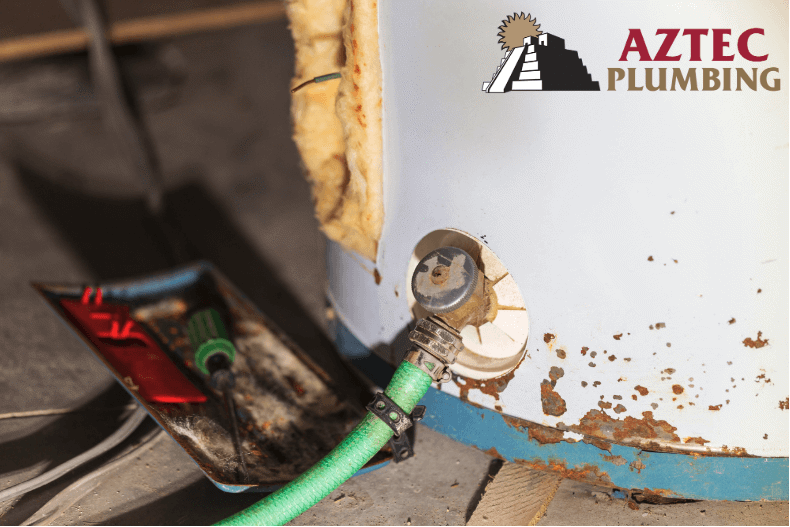
How To Drain A Water Heater
When everything is working properly, draining a water heater tank is quite the simple process. In most cases, all you need to do is turn off the power to the system, turn on the cold water supply by opening up the valve, hook up a garden hose to carry the water and sediment away from the tank and then open up the drain valve and the pressure relief valve.
Once the tank is empty and clean cold water is running through, the process is virtually over. Close the drain valve back up as well as the pressure relief valve and allow the tank to fill back up. Then relight the pilot light if you have a gas system, or turn on the power if you have an electric system and voila!
Easy enough, right?
How To Unclog A Water Heater Drain Valve
If you’re not so fortunate, and are experiencing issues where the tank won’t drain there’s a good chance the drain valve is clogged or blocked. This usually comes as a result of sediment from inside the tank blocking the valve, or as a result of calcium buildup on or around the drain valve.
So, what can you do to unclog the drain?
There are a number of different approaches you can take, depending on your unique situation:
-
Give It Time: if the clog is very minor, sometimes you just need to wait a little while in order for the pressure from the water and sediment escaping the tank, to clear the clog. In most cases, if the tank isn’t draining properly within an hour, you’ve got a more serious clog on your hands.
-
Use A Coat Hanger: sure, they’re designed to hang clothes, but wire coat hangers are also great tools for dislodging clogs. Open the drain valve and insert the wire into the tank. Move it around a bit in order to loosen any debris or sediment that may have formed around the drain.
-
Back-Flush The Drain: the idea here is to use water to push sediment away from the drain valve so that your tank can drain freely. You’ll need to use a wash machine fill hose which has a female connection on both ends. Close the drain valve and attach one end of the hose — then attach the other end to a nearby sink faucet. Turn the faucet on and open the drain valve allowing water to flow into the tank for about 10 seconds. Then turn off the faucet, close the drain valve, and disconnect the hose. Then proceed with the normal drainage steps.
If this still doesn’t solve the problem, it may require the skill and expertise of a seasoned plumber or you may simply have a faulty drain valve which would need to be replaced. In either scenario, don’t give up! Failure to drain the sediment from thank regularly could lead to some major problems including extra wear and tear on the tank. All of this could lead to the need for a brand new water heater well before you really need to replace the one you’ve got! But don’t worry, we’re here to help!
Your water heater is an important element of your home. When it breaks down, you need repairs fast. At Aztec Plumbing & Drains, we’re proud to offer 24/7 emergency service and same-day service for water heater repairs. We’ll get in and out the very same day you call us. Plus, you won’t be charged a penny extra for a water heater repair or installation done at night, on weekends, or on holidays.
Learn More in Our Water Heater Series:
Need-to-Know Water Heater Maintenance Tips
Imagine a life without hot water. That’s right, think about taking a shower or bath, cleaning dishes and doing laundry. We all take hot water for granted at times, but life just wouldn’t be as convenient or as comfortable without it.
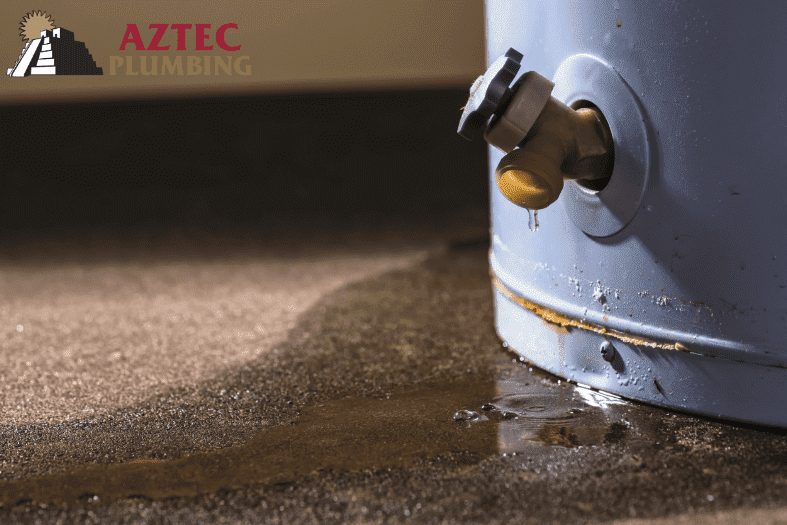
Now take a moment to think about the last time you performed maintenance on your water heater, or had a professional come in to do so. Can’t remember? Well, you’re not alone. It’s among the most commonly neglected pieces of equipment in your home, but we’re going to guess you’ll really start thinking about it if and when it breaks down.
So, what does water heater maintenance involve? Find out below!
Maintenance Task #1 - Efficiency
First off, there are a few things you can do to make sure your water heater is operating as efficiently as possible. These tasks include adjusting the thermostat to 120°F or lower, keeping the space around the appliance clear and draining sediment and debris from the tank regularly.
When it comes to the temperature setting — there’s really no need to ever have it set above 120°F. In fact, doing so can cause scalding and severe injuries. It will also cause your energy bills to rise without providing you with much in terms of added functionality.
As far as keeping the space around the appliance clear — most models require at least two feet. This allows for proper airflow and exhaust and any items located within a 2-foot radius could hinder its performance.
As water flows through the tank, it drops off sediment and debris that build up over time. In order to get rid of it and keep the system functioning at peak performance, you’ll want to drain the tank a few times per year. All you need to do is attach a hose to the drain valve and run it into a bucket until the water is clear.
Maintenance Task #2 - Functionality
If your water heater doesn’t seem to be working properly, or you simply want to make sure it continues to operate correctly, these are the maintenance tasks you’ll want to tackle.
Make sure the tank is completely full of water before turning the power on to the system.
If you don’t allow the tank to fill with water first, it could cause the upper heating element to burn out which means you’ll have no hot water until it is replaced. Another common problem arises when there is not enough voltage being sent to keep the system running. Check the manufacturer’s instructions for power requirements.
Test the temperature-pressure relief valve by shutting off the power to the unit as well as the cold water inlet. Then put a bucket in place to catch water from the valve. Pull the trip lever and you should see a rush of water vapor and air exit through the valve. If you don’t, you’ll need to drain the tank and replace the valve as it is no longer functioning properly.
Check the anode rod to make sure it still has some life left. You should have the rod replaced if more than six inches of the core steel wire is exposed, the rod is less than ½” thick, or if it’s coated with calcium.
Sure, maintaining your water heater can sound like a lot of work, but there’s no need to stress. That’s what we’re here for! While there are some tasks you can tackle on your own in a few short minutes, other tasks are best left to the pros.
At Aztec Plumbing & Drains, we provide honest, professional advice backed by years of experience. When you’re dealing with a broken water heater, we’ll give you the objective pros and cons of repairing vs. replacing the water heater. If the water heater needs replacing, we’ll explain your options in simple, clear language. Give us a call today at (239) 932-2959.
Learn More in Our Water Heater Series:
Don’t consider yourself too handy? That’s quite alright — you’ve got plenty of other things to worry about. But we’ll bet you do like saving a few bucks whenever possible, right? Well, when it comes to your water heater, you’ll be happy to know you can take care of a few simple water heater maintenance tasks relatively quickly and without having much prior knowledge at all. See below to find out what you can do on your own, before you call in the experts:
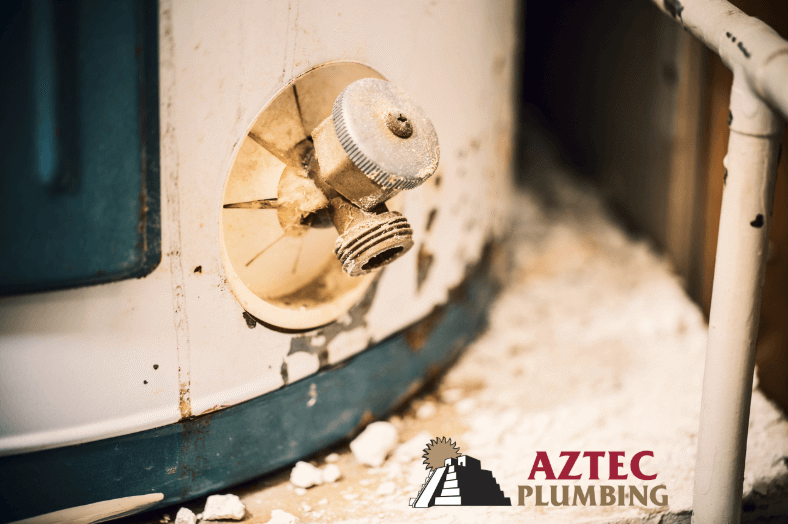
Setting The Water Heater Thermostat
If you can set a clock and you can set the temperature on any of the thermostats in your home, chances are, you’ll be able to set the thermostat on your water heater, too! All you need to do is turn the dial to the recommended setting (usually 120°F) or below if you want to save a few extra dollars on your utility bill each month. *You may need to use a screwdriver to remove the cover on the temperature dial on certain models.*
Insulating The Pipes
All you need for this project is some self-sticking foam pipe insulation and a scissor. Simply measure the length of the hot and cold water pipes and then cut a piece of foam to wrap around them. Insulating the hot pipe can help keep energy bills low, while insulating the cold pipe can help prevent condensation during the warmer months of the year.
Insulating The Tank
Why insulate your water heater tank? Doing so can help keep the tank warm for a longer period of time which will in turn, prevent the water inside the tank from cooling off as quickly. This will prevent your system from kicking on as frequently as it might if the tank were not insulated, which can ultimately help you save on energy bills.
All you need to do is cut a piece of insulating blanket to fit around the tank, and around the pipes, and then seal it with foil tape. Just remember that you never want to cover the tops of oil or gas heaters as this can cause some major issues. You can however, cover the top of your electric water heater with a piece of circular insulation and tape it down to the sides of the tank.
Give Aztec Plumbing & Drains a call at (239) 932-2959 today to learn more about our water heater services in your area!
Learn More in Our Water Heater Series:
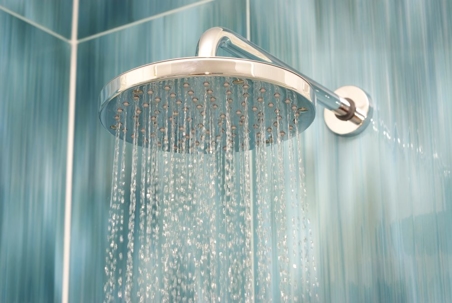
How Much Hot Water Does a Shower Use?
A 40-gallon water heater can provide up to 2 showers in an hour (if you’re not using any other water appliances).
In this article, we’ll explain…
- How to “size” a water heater, so you know how much hot water you need at one time
- Why your water heater is running out of hot water too fast
- Let’s start with sizing a water heater…
Finding out how much hot water you need at one time
We told you a 40-gallon water heater can provide up to 2 showers in an hour. But really, that all depends on two factors:
- How long your showers are
- What other water-demanding appliances are running at the same time
We’ll run through some numbers to help you see if you can squeeze two full showers out of a 40-gallon water heater.
Below is a list of common hot water-consuming activities with their corresponding water usage in gallons (data from energy.gov):
- Clothes washer - 25 gallons per use
- Shower - 10 gallons per use
- Dishwasher - 6 gallons per use
- Kitchen & bathroom faucet flow - 2 gallons per minute
If you limit your hot water activities to ONLY showers, a 40-gallon water heater could comfortably handle 2 average-length showers at the same time (17 + 17 = 34 gallons). Now, let’s say you shower in the morning and you do ALL of the above activities in the same hour (we’ll also assume you take an average-length shower). You’d use 41+ gallons of hot water, and if that’s the case, a 40-gallon water heater might not be enough for your needs.
But if more people in your home take showers within the same hour, or you take longer showers, then you may run out of hot water fast. Try limiting how many appliances you run at once and taking shorter showers if you find that you’re running out of hot water really fast.
Let’s look at some other reasons why you may be getting cold water…
Have a 40-gallon water heater that’s running out of hot water too fast?
First, ask yourself how long you’ve had the problem: Have you ALWAYS struggled to get hot water? Or is it recent?
We’ll explain what the issue could be in both scenarios.
Has your water heater ALWAYS run out of hot water too fast?
If you’ve tried to limit your hot water usage but your 40-gallon water heater just isn’t cutting it, it could be that your water heater is too small for your needs.
Below are some figures that provide a rough estimate of what size water heater you’ll need based on family size:
- 2 people or fewer = 23–36 gallons needed
- 2–4 people = 36–46 gallons needed
- 3–5 people = 46–56 gallons needed
- 5 people or more = 56+ gallons needed
Solution: Contact a plumber to install a bigger water heater that matches your needs. They’ll provide you with recommendations on different models, including tankless models, and sizes based on your needs.
Has your water heater RECENTLY run out of hot water too fast?
Then you could have 1 of these 3 problems…
Reason #1: Sediment buildup at the bottom of the tank
The water we bring into our homes to heat carries sediment (tiny mineral particles), which can build up on the bottom of your water heater’s tank.
This sediment buildup reduces the amount of hot water your water heater can provide because sediment takes up space that should be used to store hot water.
Solution: Hire a professional to flush your water heater. This will eliminate the sediment buildup.
Reason #2: Thermostat problems
Your water heater has a small thermostat that controls the temperature of the heated water. Sometimes these breakdown or malfunction over time, which limits your water heater’s ability to heat the water.
Solution: Have a plumber inspect your water heater’s thermostat to make sure it’s functioning properly.
Reason #3: Water heater is too old
Older water heaters lose their ability to heat water well over time.
Think of an old water heater like an old car. Generally, older cars require more repairs and maintenance, and often they don’t perform as well as newer cars with less mileage. It’s similar with older water heaters. They just don’t heat water as efficiently or thoroughly as they used to.
Solution: If your water heater is too old (10+ years), it may be time to replace it. Contact a plumber for price estimates on a new water heater.
Need help with your water heater in Southwest Florida? Contact Aztec Plumbing & Drains to schedule an appointment with one of our trusted plumbers. We’ll fix your hot water problems fast—the first time.
Learn More in Our Water Heater Series:
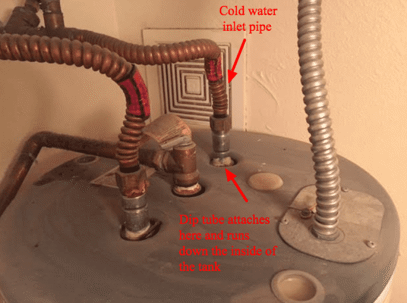
Are you running out of hot water quicker than you used to?
That’s usually caused by a bad dip tube. But, if you have an electric water heater, the culprit could also be broken heating elements or a faulty thermostat.
Confused about what those are? Don’t worry—we’ll go into more detail about each of these 3 problems and how you can fix your water heater.
Let’s start with the most common issue, a bad dip tube…
Need a plumber to fix this issue? Just give us a call and we’ll get your hot water running normal again.
The most likely problem: A bad dip tube
What’s a dip tube?
A dip tube is a long tube that attaches to the cold water inlet of the water heater (pictured above), and stops about 8 inches above the bottom of the tank. A typical dip tube looks like this.
The purpose of the dip tube is to push incoming cold water to the bottom of the tank, where the water is then heated by a gas burner or electric heating elements (depending on what type of water heater you have).
But, if your dip tube goes bad, the incoming cold water will mix with the heated water near the top, which means you’ll feel colder water a lot faster than normal.
2 reasons your dip tube goes bad
1. Normal wear and tear
The dip tubes in most newer water heaters should last the lifespan of the unit (8–12 years). However, some dip tubes also function as a “sacrificial anode rod”, which means it’s designed to attract all the corrosive elements in the water, ultimately protecting the tank from corrosion. Because these dip tubes “sacrifice” themselves, they usually have a shorter lifespan than the unit itself and will need to be replaced.
2. It’s defective
Some dip tubes are more prone to disintegrate and break down than others. Most water heaters made between 1993–1997 have defective dip tubes because during those years, many manufacturers bought and installed tubes with lower quality polypropylene plastic.
You’ll need a new dip tube if you notice these 2 signs:
1. Your water heater was manufactured between 1993–1997. You’ll know if you see the any numbers between 93 and 97 in the 4th and 5th digit of your water heater’s serial number.
2. Small white plastic particles are suddenly clogging your faucets. These little pieces of plastic come from a disintegrating dip tube.
How can I replace a bad dip tube?
Replacing a bad dip tube isn’t complicated, but you’ll still need a professional’s help. You’ll need a plumber to flush your water heater to get rid of any disintegrated plastic particles that may be floating in your tank.
Dip tube not the problem? If you have an electric water heater, check for these problems…
Bad heating elements
Electric water heaters have 2 heating elements (upper and lower) to heat water in your tank. Since the coldest water is on the bottom of your tank, the lower heating element does most of the work.
So if you’re getting cold water really fast, a bad lower heating element could be to blame. Contact a plumber to test your heating elements for continuity (to see if current flows). If your heating element is broken, they’ll replace it.
Faulty thermostat
An electric water heater has 2 thermostats that control each of the heating elements. As with all electrical components, sometimes these malfunction or break down with time. If one of the thermostats is broken, then it will limit your home’s hot water supply.
Contact a professional to inspect your thermostats to make sure they’re running correctly.
Need water heater help from a Florida plumber?
Contact Aztec Plumbing & Drains to schedule a water heater repair. We’ll send one of our certified plumbers to check out the source of the problem and then repair it so you can have normal hot water again.
Learn More in Our Water Heater Series:
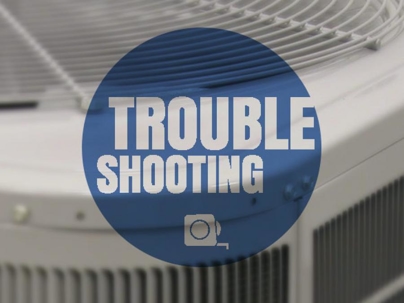
“Eww, what’s that smell?”
Are you smelling a strong “rotten eggs” or sewer gas smell coming from your water heater, especially when you run hot water?
That “rotten egg” smell is caused by hydrogen sulfide (H2S), which is a colorless, flammable and highly hazardous gas.
Hydrogen sulfide doesn’t dissolve in water, so when you turn on the hot water tap, the heat makes the hydrogen sulfide escape into the air, hence the unpleasant odor.
Small amounts of hydrogen sulfide in your water don’t cause any problems, but according to University of Georgia Extension (UGA), when H2S exceeds 1.0 ppm (parts per million) in your water, it can ruin your pipework and affect the taste of your drinks and cooked food—so it’s something you want to get rid of ASAP.
In this article, we’ll discuss 2 major points:
- How hydrogen sulfide entered your water in the first place
- What you can do to eliminate H2S
Let’s start with how hydrogen sulfide got into your water…
How hydrogen sulfide entered your water in the first place
There are 2 main ways how hydrogen sulfide can enter your water…
Cause #1: Sulphur-reducing bacteria
Here’s the condensed version (so we don’t turn this into a science class): Sulphur-reducing bacteria (SRB) use sulfur as an energy source, and are common in oxygen-deficient environments such as deep wells, plumbing systems and water heaters.
You can think of SRB as magicians who turn sulfates into hydrogen sulfide. More scientifically, when SRB come into contact with sulfates, they reduce them to hydrogen sulfide—hence their name.
If your home has a high count of this kind of bacteria then that could be what’s causing that foul, smelly odor.
Cause #2: A corroded magnesium anode rod in water heater
Your water heater comes with an anode rod, which is supposed to protect your water heater tank from rust. The rod essentially draws rust to it in place of your tank.
Many water heaters have an anode rod made out of magnesium. Magnesium anode rods supply electrons that aid in the conversion of sulfate to hydrogen sulfide gas—just like the sulphur-reducing bacteria can.
WARNING: If you’re using an ion exchange water softener, it’s making the problem worse. That’s because softened water increases the rate at which the magnesium rod corrodes, creating more hydrogen sulfide.
3 ways to get rid of hydrogen sulfide in your water
Below are 3 ways to reduce hydrogen sulfide in your water to get rid of that bad smell…
Solution #1: Shock chlorination
Shock chlorination is used to disinfect tanks, wells and/or water distribution systems. This cleansing process kills the cluster of sulphur-reducing bacteria (those magic bacteria that create H2S), thereby eliminating the bad smell.
Learn more about shock chlorination procedures.
Solution #2: Proper water filtration
The type of filter you need depends on the level of hydrogen sulfide. For more information about different types filters, contact a plumber. They’ll be able to provide filter recommendations.
Solution #3: Replace the water heater anode rod
If your rod looks corroded and nasty (like the image in Cause #2), it’s time to replace it. If you had a magnesium rod, you’ll want to find one made of aluminum or zinc.
Watch is DIY video on how to replace a dirty anode rod, or contact a plumbing professional for help.
Need some help from a professional Florida plumber?
Contact Aztec Plumbing & Drains to schedule a water heater repair today. We’ll send one of our trustworthy technicians to your home to get rid of that stinky smell once and for all.
Learn More in Our Water Heater Series:
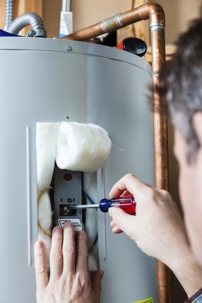
For every homeowner, home maintenance is something you can not skip out on. It is important to always check up on items in your home to make sure everything is running smoothly, your water heater being one of them. It is important to flush your water heater annually due to the gradual build up of sediment in the bottom of the tank. Fort Myers, Naples, Cape Coral and our surrounding communities have high amounts of calcium and other minerals in their water that overtime will settle in the water heater and begin to build up, sometimes as much as 6 inches. This will greatly reduce the efficiency of the water heater and cause it to leak — the minerals will eat away the inside of the water heater.
Failure to regularly drain and flush your water heater can greatly reduce the life of the water heater as much as several years.
In addition to the sediment building up and reducing the lifespan of the water heater if the sediment builds up too high it can prevent the ability to drain the water heater altogether. The drain of the water heater is located 2-3 inches from the bottom of the tank, therefore draining may be out of the question if the build up is too high . The only solution at that point may be to prematurely replace your water heater.
When you become a member of Aztec Plumbing & Drains’s annual Prevention and Care Plan(PCP), we provide an annual flush and maintenance of your water heater. These two items are just some of the many benefits we provide included in our PCP membership. If you do not want to have to flush your water heater annually, another solution is to install a good in-line water conditioning product, which prevents having to flush the water heater at all!
Please stay tuned for other Aztec Plumbing & Drains monthly blogs and tips!
Voted Southwest Florida’s BEST Plumber for 13 years.
Learn More in Our Water Heater Series:











